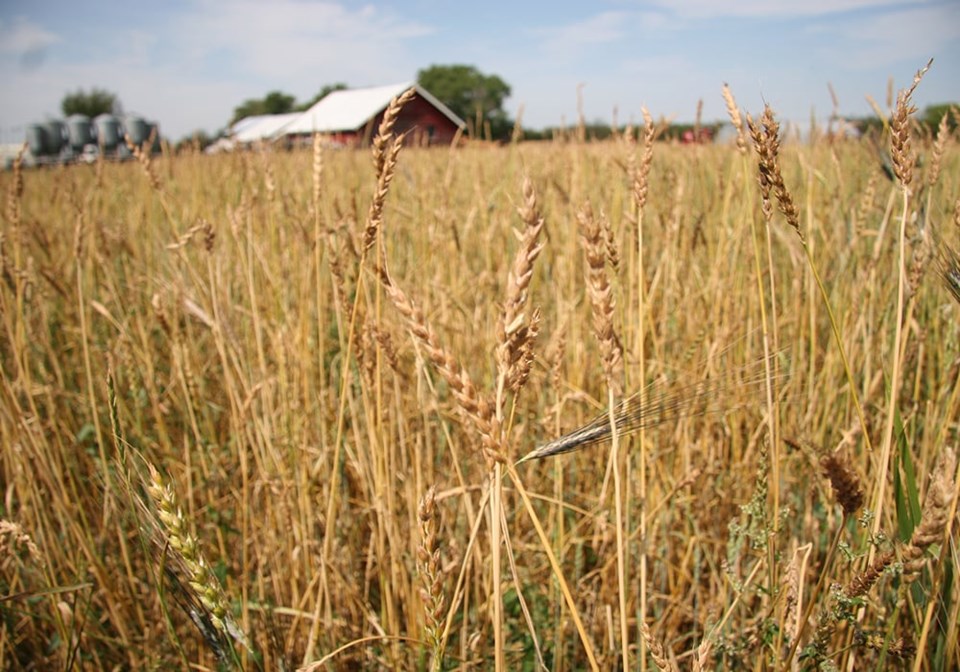Allison Squires has noticed a change in domestic consumption of organic goods in the post-COVID environment.
“It has been really interesting to see the shift for us because normally we sell bulk like many producers in the prairie provinces,” said the owner of Upland Organics, an organic farm located near Wood Mountain, Sask.
These days the farm is selling a lot more to smaller mills and bakeries.
“We’re actually having to take a bit of a pivot and we’re really trying to think about how we can better sell things in smaller quantities that are more ideal for these smaller customers,” she said.
Prior to COVID, the farm had two customers who were consistently buying one-tonne totes. Today there is triple that amount.
Small flour mills and bakeries are telling her that their customers are interested in shortening the supply chain. They only want one step in the chain between the consumer and the farmer.
The farm is still shipping in bulk to large customers like a mill in Quebec but an increasing volume of their durum and heritage grains is going to smaller mills and bakeries in the Prairie provinces.
Organic sales in other markets have also been positively influenced by COVID as consumers are increasingly looking for healthy foods that can be locally sourced.
But they have been negatively affected by soaring food price inflation, according to a recent report on the world’s largest organic market.
Spiraling food and energy prices likely resulted in reduced organic food sales in most European Union countries in 2022, according to the United States Department of Agriculture’s Foreign Agricultural Service.
That is following a stellar 2021 when the EU regained the title as the world’s largest organic market, after losing its crown to the U.S. during the 2012 through 2020 period.
The EU accounted for US$58.6 billion of organic food sales in 2021, experiencing a robust 12 percent annual growth rate.
Sales in the U.S. increased by a more moderate two percent to $57.5 billion that year.
The COVID-19 pandemic proved to be an important driver of the EU’s sales in 2021 as restaurants were closed and home cooking became the norm.
That sparked double digit growth in sales in Germany, France, Hungary, Austria, Ireland, Greece, Romania and Slovakia, according to the USDA.
An increased focus on health and sustainability spurred by COVID also led to the high growth rates.
Sales had been steadily growing every year for the past six years, but that likely came to a halt in 2022 when Russia’s invasion of Ukraine changed everything.
“High inflation rates across Europe, fueled by increasing food and energy prices, caused many consumers to save money by buying cheaper food products,” stated the USDA.
It estimated that organic food sales in the EU fell by five percent in 2022. When combined with the currency effects of a weaker Euro, EU organic food sales may have declined to $50 billion.
Squires usually sells her lentils to the EU but that hasn’t been the case lately due to the drought of 2021 followed by a grasshopper plague in 2022.
“We didn’t have anything to export,” she said.
Fortunately, the domestic market for the other crops she grows has been expanding.
The USDA believes the slump in EU sales is likely temporary.
The long-term growth of the EU organic market is supported by Europe’s Farm to Fork Strategy, which calls for 25 percent of the EU’s farmland to be certified organic by 2030, up from 8.5 percent in 2019.
An estimated 33 million acres were under organic management in 2022, down slightly from 2019 levels of 34 million acres, so there has been little progress on that target.
The USDA estimates that 45 percent of the 33 million acres is used for permanent organic grassland. Another 40 percent is used for arable crops, including green fodder and cereals.
Contact [email protected]



